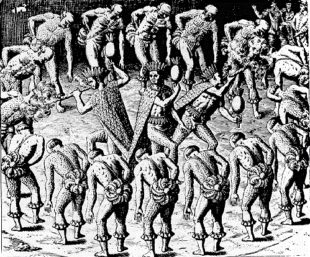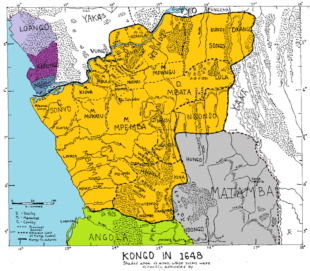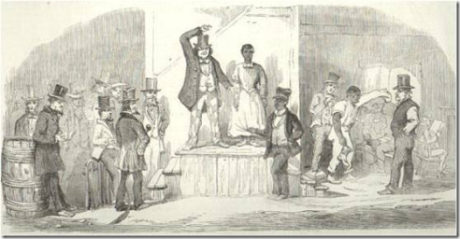Brazil is the biggest and most populated country in Latin America. It’s also the fifth largest country in the world, with respect to its area and population: Brazil covers half the territory of South America and holds more than half its inhabitants. It shares borders with all the countries of South America except for Chili and Ecuador.
The first humans arrived in Brazil around 60,000 years ago. By the end of the XVth century, the territory was inhabited by semi-nomad tribes (more than 200 ethnicities), who did not lead a life of ownership. The Tupinambas were the most important race.
The Portuguese explorer Pedro Alvares Cabral ‘discovered’ the Brazilian coast on 22nd April 1500. The Portuguese settlers moved into the coasts and called this land Brazil, after the Brazilian wood that emits a red vermeil dye (Brasil in Portuguese refers to “ember”); the native Indians were first called the Brazils. Native Indians readily accepted cutting wood in exchange for tools, blankets or jewelry.
Eventually, “Brazilian wood” was no longer sufficient to guarantee the economic development of the new territory, and the king Joseph II of Portugal (João II) entrusted the development of the land to his lords (the beneficiaries) who allocated large areas of lands to the settlers, making them in charge of the cultivation of sugar cane.
The first Portuguese settlers therefore ended up enslaving American Indians in order to harvest sugar can and precious wood.
Exploitation of the indigenous
The colonization effort proved to be a difficult undertaking on such a vast continent, and indigenous slave labor was quickly turned to for agricultural workforce needs. Aggressive mission networks of the Portuguese Jesuits were the driving force behind this recruitment, and they successfully mobilized an indigenous labor force to live in colonial villages to work the land. These indigenous enslaving expeditions were known as bandeiras.
These expeditions were composed of Bandeirantes, adventurers who penetrated steadily westward in their search for Indian slaves. These adventurers came from a wide spectrum of backgrounds, including plantation owners, traders, members of the military, as well as people of mixed ancestry and previously captured Indian slaves. In 1629, Antônio Raposo Tavares led a bandeira, composed of 2,000 allied índios, “Indians”, 900 mamelucos, “mestizos” and 69 whites, to find precious metals and stones and to capture Indians for slavery. This expedition alone was responsible for the enslavement of over 60,000 indigenous people.
Tupinambas
 Tupinambas were part of the Tupi people who inhabited almost all of Brazil’s coast when the Portuguese first arrived there. In 1500, the Tupi population was estimated at 1 million people, nearly equal to the population of Portugal at the time. They were divided into tribes, each tribe numbering from 300 to 2,000 people. Some examples of these tribes are: Tupiniquim, Potiguara, Tabajara, Caetés, Temiminó, Tamoios. One of the most important tribe was the Tupinambas who were living on the coast of Brazil from the river rio São Francisco to the Recôncavo Baiano.
Tupinambas were part of the Tupi people who inhabited almost all of Brazil’s coast when the Portuguese first arrived there. In 1500, the Tupi population was estimated at 1 million people, nearly equal to the population of Portugal at the time. They were divided into tribes, each tribe numbering from 300 to 2,000 people. Some examples of these tribes are: Tupiniquim, Potiguara, Tabajara, Caetés, Temiminó, Tamoios. One of the most important tribe was the Tupinambas who were living on the coast of Brazil from the river rio São Francisco to the Recôncavo Baiano.
These people relied on fishing, harvesting and farming for a living. The Native Indians often painted their skin in a different color, their staple food consisted of cassava, but they also grew corn and tobacco. They invented the hammock and the blowpipe.
The Tupinambas were constantly at war with other tribes and would not hesitate to eat the captured prisoners (they believed that the strength of a brave warrior would get transmitted to them by eating them).
In general, the American Indians, who were not many in numbers, often preferred to hide deep in the lands or to commit suicide rather than be enslaved (if they were enslaved, they would be socially excluded from their tribes). They remained much cheaper during this time than their African counterparts, though they did suffer horrendous death rates from European diseases. Due to the lack of number of the Indigenous people, their high mortality rate and their frailty, it was difficult to keep them as slaves, and the Portuguese were forced to take recourse on black slaves from Africa from the year 1532 onward.
In 1775, slavery of Native Indians was abolished and the reliance on African slaves increased.
Exploitation of the Africans
The first Portuguese excursions in Africa (around the year 1460) were pacifist in nature. There are also stories that weddings between the Portuguese and native women were not rare, and that this practice was allowed by the local authorities. Things however changed quickly and the slave trade was mainly started by Muslim merchants who bought war prisoners from the tribes. Faced with an increasing demand, the slave merchants quickly began to capture the members of the tribes in order to resell them.
Between the years 1450 and 1900, we estimate that more than 11 313 000 individuals were sold in the slave market across the Atlantic network (this number is often considered to be an underestimated value concerning only the individuals that survived the journey across the Atlantic) out of which 5 million were sent to Brazil.
Slavery mainly impacted Western Africa, among which the people of Mandinka, Yoruba and Congo.
The Mandinka
Mandinka are an ethnic group from West Africa and are part of the Mandè ethnicity. They have a common language called Mandinka, common traditions and history. Today there are about 11 million Mandinka scattered in the nations of Sierra Leone, Guinea, Mali, Senegal, Gambia and more states of West Africa. Most of them are of Islamic belief though they kept a huge amount of their old traditions.
Mandinka history begins in the Middle Ages. It is the story of the Manding Empire, or better known as Mali empire which existed from the 13th century till it collapsed at the beginning of the 17th century. It was founded by the magician Sundjata who belonged to a noble Islamic family of West Africa. During its time the empire had a huge influence on culture and traditions in West Africa. It had a high standard of civilization and was one of the most urbanized areas in the world. One of its famous personalities was King Mansa Musa (about 1300 to 1330), who was so rich that the value of gold dropped during the time he and his caravan visited Cairo (on his journey to Mecca, the Hajj).
After the collapse of the empire, different tribes among the Mandinka did engage in a war with each other. During this war, a lot of people were driven to the Atlantic coast. Some willingly, a lot of them were caught and were enslaved. Today, a lot of the Afroamericans in North America are descendants of the Mandinka, but the slaves were transported not only to North America, but also to South America (especially Brazil).
The Yoruba
The Yoruba are tribes which are loosely linked by geography, language, history, and religion. In Nigeria, Benin and Togo there are about 15 million Yoruba.
History
There is some archaeological evidence that the area where the Yoruba live is occupied since prehistoric times. Some theories say their primary ancestors, the Odudua, came from Egypt. These are based on the fact that there are similarities between early Egyptian and Yoruban sculptures (though this can also be just an effect of trade or intercultural cross-talk). According to Yoruba myths, the founders of the Yoruba states were the sons of Odudua. The Yoruba still refer to themselves as “the children of Odudua.” Although they had a common origin, a common language and common believes the Yoruba never had one single political organization. They were organized into up to 25 different nations with urban centers for political, economical and cultural life. The Yoruba were the most urbanized Africans in pre-colonial times.
Ile-Ife is universally recognized as the oldest and ritually most important Yoruba city. The founding of Ife is believed to date to about 850 AD. Its biggest rival, the Oyo kingdom just to the northwest of Ife, was founded about 1350 AD. The Oni of Ife and the Alafin of Oyo are still the most highly respected Yoruba kings in Nigeria. Other major kingdoms were Ijesha, Ekiti, Shabe, Ketu, Egbado, Ijebu, Awori, Ondo, Owo, and Itsekiri. By the 18th century numerous wars between Yoruba states did add to the political, economical and demographical challenges of the slave trade. Slaves of Yoruba descent were resettled in Cuba and Brazil, where elements of Yoruba culture and language can still be found.
Religion
Yoruba had a very strong influence on belief systems in South-America and the Caribbean. In the religion of the Yoruba there are important beings such as kings, ancestors and deities. There are around 401 Gods, known as Orishas, which are also known to Caribbean and South-African religions like Candomblé.
Art
The Yorubas are famous for their art and craftwork, especially for their wood sculptures extending to carved doors, drums and ritual masks.
The doors are often covered with carved panels of scenes of everyday life, history, or mythology. The masks are facial carvings that represent different types of Yoruban religious entities like the trader, the servant, and the seducer.
Other than wood carvings the Yoruba also have beautiful sculpture work in brass, terracotta, and steel.
The Congo
The Congo people, or Besinkongo or Bakongo, as they refer themselves, are part of the ethnic group known as the Bantu. There is about 10 million Congolese people living today mostly on the African Atlantic coast between Brazzaville and Luanda.
History
 The word Bantu does refer to over 400 ethnic group in Sub-Saharan Africa and a language diversity similar to the diversity of the Indo-European languages. The Bantu appear to be descendants of a “proto-tribe” which went through a vast expansion phase in the last 5000 years mostly through diffusion of the culture and the language. Around the year 500 BC the Congo reached the area of the Congo River and engaged in iron work and agriculture. During the 2000 years of pre-Colonial Congo there were a number of kingdoms built up by the Congo people, including the Kingdom of Kongo, Ngoyo, and the Loango kingdom. The Kingdom of Kongo played an important role in early phase of Congo history which was presumably founded around the year 1100.
The word Bantu does refer to over 400 ethnic group in Sub-Saharan Africa and a language diversity similar to the diversity of the Indo-European languages. The Bantu appear to be descendants of a “proto-tribe” which went through a vast expansion phase in the last 5000 years mostly through diffusion of the culture and the language. Around the year 500 BC the Congo reached the area of the Congo River and engaged in iron work and agriculture. During the 2000 years of pre-Colonial Congo there were a number of kingdoms built up by the Congo people, including the Kingdom of Kongo, Ngoyo, and the Loango kingdom. The Kingdom of Kongo played an important role in early phase of Congo history which was presumably founded around the year 1100.
The first contacts between the Portuguese and the Congo Empire in the year 1482 were pacifist with Congolese nobles presented to the European courts. Obviously attempts to Christianize were made and resulted in king “Nzinga a Nkuwu” being baptized as Joao I. in 1491.
When the Kongo people had to defend themselves against the Yaka in the mid of the 16th century, they asked the Portuguese for help, who came and stayed. Congo was officially colonized by 1885. But before that the Congo kingdom had long lost its power and a large number of Congo people were sold as slaves to the Portuguese. The starting point for most Congolese slaves was Luanda, founded by the Portuguese explorer Paulo Dias de Novais in 1575.
Since its foundation till 1836 Luanda was the administrative center of the Portuguese slave trade.
Religion
One essential part of Congo religion is the existence of “spirits”, which can be ancestors, but also other spirits, which can inhibit objects. These objects, the ‘minkisi’ (singular: nkisi) can act as enchantments, protecting the person who wears them. Nkisi do also come up in Candomblé. Most of the Congolese traditions in African Diaspora can be found in the Quimbanda (Macumba), an Afro-Brazilian religion.
Art
Congolese art is predominantly focusing on human beings and animals with a lot of sculpture work. Most of the Congo art is wood carvings and pottery.
The Mbundu
The southern neighbors of the Congo people were another ethnic group with a high importance for Portuguese slave trade, the Mbdundu. The Mbundu count around 10 million people and share common traditions as well as the Kimbundu language. Like the Congo people, the Mbundu also have a distinct history which changed drastically upon the arrival of the Portuguese. And like the Congo a lot of Mbundu people were sold as slaves to Brazil and other South American states.
History
 The oral tradition of the Mbundu does tell us that the founder of the Mbundu kingdom was a person called Ngola Kiluanje, who emigrated from the Congo and founded the kingdom of Ndongo. The kings of the Ndongo were called N’Gola, thus the modern name of the state of Angola. First records of Ndongo are from the 16th century when missionaries and adventurers did write down oral traditions of the Mbundu. In those times the Ndongo was a tribute state of the Congo Kingdom, although in later times the Ndongo did gain power with the help of the Portuguese. The rest of the history of this kingdom does read like a classical story of the time of Colonialism with the exception of Queen Nzinga. Mbundu society is strongly matrilineal and did have a lot of important female figures in its history. One of them was the Queen Nzinga born 1582 to the Ngola Kiluanji. She got into power and built up a coalition against the Portuguese attempts to gain power in the region. She was able to hold back the Portuguese in a time when those were thirsty for new land and new slaves to be sold to the growing agricultural economy in Brazil. Queen Nzinga, who led the armies against the Portuguese personally, successfully signed a Peace treaty with the Portuguese in 1657. She died peacefully in 1663 but today remains one of the most important figure in Angola history.
The oral tradition of the Mbundu does tell us that the founder of the Mbundu kingdom was a person called Ngola Kiluanje, who emigrated from the Congo and founded the kingdom of Ndongo. The kings of the Ndongo were called N’Gola, thus the modern name of the state of Angola. First records of Ndongo are from the 16th century when missionaries and adventurers did write down oral traditions of the Mbundu. In those times the Ndongo was a tribute state of the Congo Kingdom, although in later times the Ndongo did gain power with the help of the Portuguese. The rest of the history of this kingdom does read like a classical story of the time of Colonialism with the exception of Queen Nzinga. Mbundu society is strongly matrilineal and did have a lot of important female figures in its history. One of them was the Queen Nzinga born 1582 to the Ngola Kiluanji. She got into power and built up a coalition against the Portuguese attempts to gain power in the region. She was able to hold back the Portuguese in a time when those were thirsty for new land and new slaves to be sold to the growing agricultural economy in Brazil. Queen Nzinga, who led the armies against the Portuguese personally, successfully signed a Peace treaty with the Portuguese in 1657. She died peacefully in 1663 but today remains one of the most important figure in Angola history.
The Portuguese submitted the Mbundu in the year of 1671. They stayed under the slave trade and Colonialism till the 20th century.
Religion
The belief systems of the Mbundu are based on the interactions, praise and communication with ancestral spirits and nature spirits. Problems and difficulties in life are referred to as problems in the communication with these spirits. To solve these problems, there existed a diviner, the Kimbanda, who had the ability to communicate with the spirits. These diviners are still referred to when Angolans have problems, although Christianity did enter the Mbundu society at the very first contacts with the Portuguese.
Arts
Mbundu arts are usually intermixed with the arts of neighboring nations. As the Congo nations the Mbundu do have a lot of artwork with carvings. One specialty seems to be the Mbundu masks worn in rituals.
Other origins
Slavery was not only endured by native Indians or blacks. As the distinction between prisoners of war and slaves was blurred, the enslavement, although at a lesser scale, of captured Europeans also took place. The Dutch were reported to have sold Portuguese, captured in Brazil, as slaves, and of using African slaves in Dutch Brazil. There are also reports of Brazilians enslaved by barbaric pirates while crossing the ocean.
 Slavery is the condition in which an individual is deprived of his/her freedom and becomes exploitable by another person as if he/she were a tangible property.
Slavery is the condition in which an individual is deprived of his/her freedom and becomes exploitable by another person as if he/she were a tangible property.




















